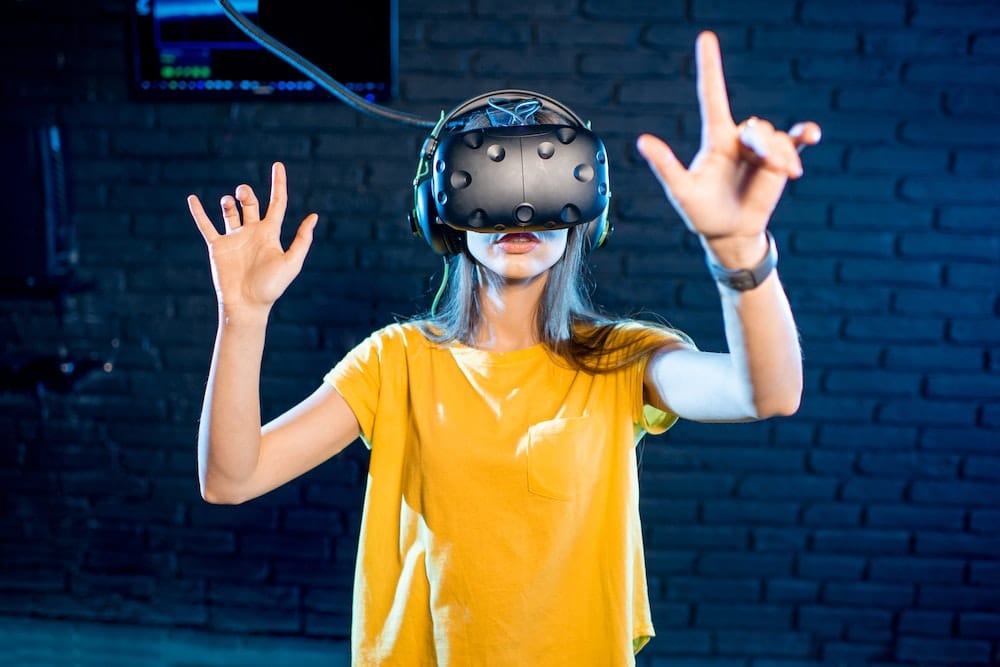How Is Virtual Reality Being Applied to Enhance Training in Hazardous Industry Environments?

Virtual Reality (VR) is paving the way for revolutionizing training methods in various industrial sectors. This impressive technology has shown considerable potential in enhancing safety training, particularly in high-risk industries like construction, oil and gas, and mining. By immersing workers in a virtual environment, it provides them with the opportunity to learn and practice safety measures in a controlled, safe space.
The Intricacy Of VR Training
Let’s delve into the intricacies of VR training to understand its capabilities better. The basis of VR training is simulation. It employs computer-generated simulations to create an immersive virtual environment that replicates real-life scenarios. These environments are interactive and three-dimensional, providing employees a real-time experience.
A découvrir également : What Are the Latest Developments in High-Resolution Underwater Imaging Technologies?
Unlike traditional training methods, VR training is not confined to theoretical learning. It allows employees to actively engage in simulated safety scenarios. This interaction is essential for learning and retaining knowledge, particularly when it comes to safety protocols and emergency procedures.
Moreover, VR training does not expose workers to actual risks. This is particularly helpful in the construction industry where the potential for accidents is high. Workers can interact with virtual equipment and hazards without any real-world consequences.
Cela peut vous intéresser : How Are Artificial Neural Networks Enhancing Real-Time Intrusion Detection Systems?
VR Training and Safety Improvement
As previously mentioned, virtual reality training provides a safe environment for learning and practicing safety procedures. But how does this translate into safety improvement in the workplace?
Firstly, an immersive VR environment ensures the training is more engaging, making it easier for employees to remember the safety procedures. This has a significant impact on improving safety in the workplace, as employees are more likely to follow procedures they clearly understand and remember.
Secondly, VR training allows workers to gain practical experience in dealing with accidents and emergencies, which is usually hard to acquire in a traditional classroom setting. They can learn how to use safety equipment properly, how to react in case of an emergency, and how to avoid common safety hazards.
Thirdly, virtual reality training allows for frequent repetition of simulations. This repetition reinforces learning and helps workers to react quickly and correctly in a real-life emergency situation.
Cost-Efficiency of VR Training
While the initial cost of implementing VR technology for training might seem high, it can actually lead to considerable savings in the long run. Virtual reality eliminates the need for physical resources that are often required for traditional training methods. There’s no need to buy, maintain or replace expensive equipment or tools for training purposes.
Additionally, VR training can be conducted anywhere, anytime, reducing the need for dedicated training rooms or space. It also eliminates travel and accommodation costs for employees who otherwise would need to attend training at a specific location.
In terms of time efficiency, VR training allows for quick and versatile learning. Employees can go through the training at their own pace, revisiting certain sections whenever necessary. This ensures a high level of training efficiency, as employees can focus on areas where they need most improvement.
Future of VR Training in High-Risk Industries
The future looks bright for the application of VR in safety training. Many industries are already seeing the benefits of this revolutionary technology, and its use is expected to continue growing.
As VR technology advances, we can expect more realistic and sophisticated simulations. These will provide even more valuable training experiences, further enhancing safety in the workplace.
Moreover, the rise of augmented reality (AR) is opening up new opportunities for training. AR, which superimposes digital information onto the real world, can be used in conjunction with VR to create even more immersive and interactive training experiences.
Lastly, the future of VR training lies in personalisation. Advanced algorithms and machine learning can be utilised to tailor training to the individual needs of each employee. This personalised approach will ensure that each worker gets the most out of their training, which in turn will further improve safety in the industry.
Virtual Reality is indeed a game-changer in safety training. By providing a realistic, safe, and engaging learning environment, it enables workers to acquire vital skills and knowledge, thereby reducing the risk of accidents and injuries in the workplace. It’s safe to say that the future of safety training in high-risk industries lies in virtual reality.
Utilizing VR Training Across Various Industries
Virtual Reality technology is no longer a novelty but an essential tool across multiple industries, particularly those with high-risk environments. Industries such as the oil and gas sector, construction, and mining have begun to leverage VR training to enhance their safety protocols.
The oil and gas industry, for instance, is known for its volatile and unpredictable nature. Virtual reality training can be used to simulate emergency situations such as oil spills or gas leaks. Workers can practice their response to these hazards in a controlled and secure virtual environment. This not only increases their confidence and readiness but also potentially saves lives during real life incidents.
In the construction industry, the use of VR training is equally beneficial. Construction site accidents are unfortunately common and can be fatal. By simulating construction safety scenarios and procedures in a virtual environment, workers can gain a better grasp of the necessary safety measures. This immersive interactive training method ensures that workers are well-prepared to identify and avoid potential hazards, thereby enhancing workplace safety.
Likewise, the mining industry can also greatly benefit from applying VR technology in its training programs. Mining involves a unique set of risks such as tunnel collapses or gas explosions. With VR training simulations, workers can learn how to respond appropriately to such incidents in a safe and controlled setting.
Conclusion: VR Training – A Pathway to Enhanced Safety
In conclusion, the use of Virtual Reality in training methods has emerged as a game-changer, particularly in hazardous industry environments. The immersive and interactive nature of VR creates a realistic yet safe training environment. This helps workers to understand, remember, and practice safety procedures more effectively.
Furthermore, VR training is cost-effective in the long run. It eliminates the need for physical resources and provides flexibility in terms of time and location. This makes it a practical and efficient solution for safety training across various high-risk industries.
As VR technology continues to improve and expand, augmented reality is also expected to play a significant role in future training programs. The integration of AR can further enhance the virtual training experience, making it even more immersive and interactive.
Moreover, the development of advanced algorithms and machine learning may allow for more personalized training programs, tailored to the individual needs of each worker. This personalized approach will ensure maximum learning effectiveness, resulting in even better safety performance in the industry.
Undeniably, the future of safety training in high-risk industries such as oil, gas, construction, and mining is intrinsically linked with the advancement of VR technology. The benefits of VR training are numerous, ranging from increased safety to cost-efficiency. As we continue to leverage this revolutionary technology, we can expect to see a significant improvement in workplace safety in these high-risk industries.
